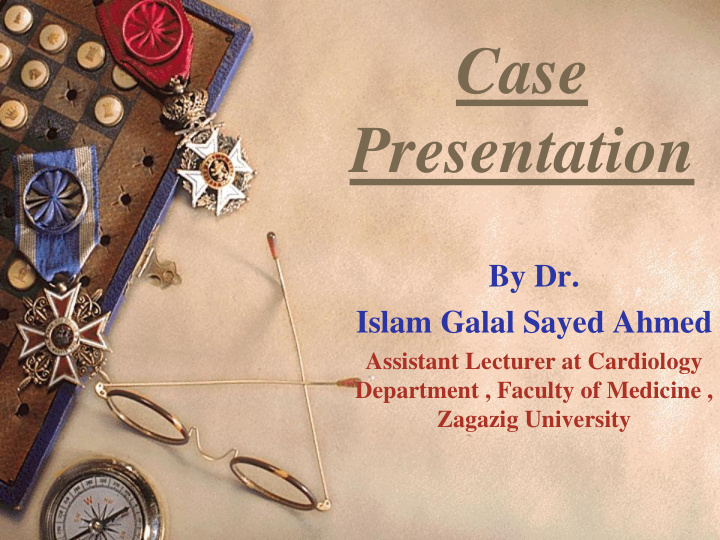



Case Presentation By Dr. Islam Galal Sayed Ahmed Assistant Lecturer at Cardiology Department , Faculty of Medicine , Zagazig University
Marked Improvement Of Left Ventricular Function And Valvular Regurgitation After Percutaneous Closure Of Patent Ductus Arteriosus
Introduction Patent ductus arteriosus (PDA) is a congenital anomaly causing left ventricular (LV) volume overload, which may be a compensatory phenomenon to maintain systemic cardiac output.
Previous reports demonstrated that PDA closure led to immediate deterioration of LV systolic function, which recovered within 6 months in children. Furthermore, LV remodeling and changes in LV systolic function after PDA closure in adult patients have not been sufficiently reported. .
Case 29 year-old female suffering from dyspnea and palpitation with rapid AF was examined. Echocardiography showed 15mm PDA causing severe pulmonary hypertension.
She had moderate mitral regurgitation (MR) and moderate aortic regurgitation (AR) with healthy leaflets. LV dimensions were dilated. Ejection fraction (EF) was 47%.
Procedure We decided to close the PDA percutaneously . Balloon closure test of PDA was done first using sizing balloon for 20 minutes. Mean pulmonary artery pressure significantly decreased (from 72mmHg to 47mmHg) and LV systolic pressure improved (from 85mmHg to 123mmHg).
We closed the PDA using ASD Amplatzer occluding device of size 17mm with good result without significant residual shunt.
Follow Up 1month later, no significant shunt was detected by echocardiography, LV size was reduced, MR and AR were both reduced from GIII/IV to GII/IV. EF became 62%. AF was controlled without digoxin. 4 months later, the patient was symptom free.
Discussion Recently, Eerola et al demonstrated, using 2- and 3- dimensional echocardiography, that changes in LV volume and function caused by PDA closure disappeared by 6 months after percutaneous closure in children. our current case demonstrated that LV recovered during the long-term follow-up period in adult PDA patients.
Cont. Discussion Recently, transcatheter device occlusion has become the first choice treatment for adult PDA. There are several publications describing subsequent deterioration of LV systolic function after PDA closure.
Reduced muscle fiber stretch by the sudden reduction in LV volume overload and increased LV afterload may be the cause. Deterioration after PDA closure is more pronounced in adults than in children because the LV has been subjected to prolonged remodeling induced by the volume overload .
Conclusion PDA device closure reduces LV size and improves its function. Valvular regurgitation could be improved after PDA closure providing that the leaflets are healthy. Hence, it doesn't necessarily motivate surgical closure.
Much more to come Are we all still awake?
Recommend
More recommend